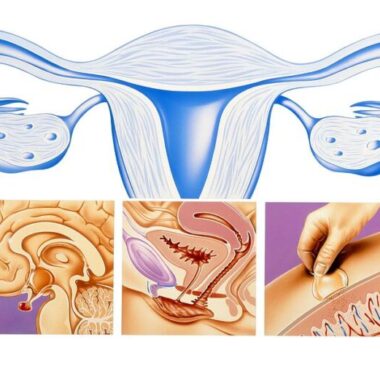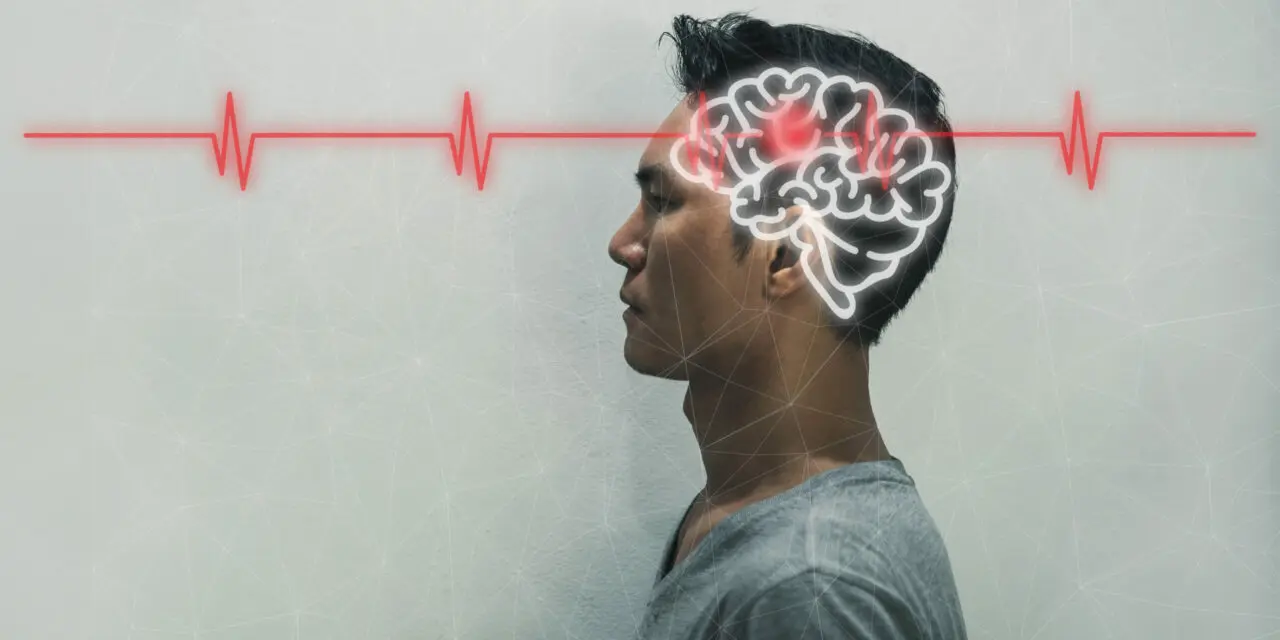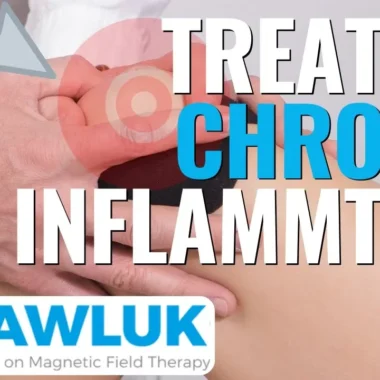Repairing The Weekend Warrior with PEMFs
Table of Contents

I am now reminded every day that I am in my 60s. My body reminds me from multiple locations. While I’m not a professional or even a semiprofessional athlete, I have accumulated numerous aches and pains as a weekend warrior over the years.
My first significant injury occurred while playing sandlot football in my final year of medical school. I jumped up to snare a pass and was turning around as my leg was planting. It felt an immediate pain in my right knee and limped off the field. Within minutes, my knee was as big as the football. Several hours later my knee was tapped, producing frank blood. That was in 1970. Orthopedics was still relatively primitive at that time. The surgical option was certainly more potentially debilitating than learning to live with the injury. It was a torn menisci and a complete ACL rupture. That injury limited the aggressiveness of any sports I would engage in for the rest of my life. This included tennis, downhill skiing, racquetball, etc.
However, I did play a little bit of softball. I practiced pitching and catching with my kids as they were growing up, and some soccer practice. The limitations I had to endure were fairly acceptable to me. This was because I got wrapped up in my medical career, which basically consumed most of my time.
My daughter tore her ACL playing college field hockey. After she had a successful ACL repair, I decided to see an orthopedic surgeon regarding my options. His examination showed that I had a completely ACL-deficient knee. I didn’t need to worry about the menisci catching or locking–my knee was that loose. He said that I was lucky in that I had a small frame and was not greatly overweight. Otherwise, I would have had to have had a procedure long before. At that point I elected not to do surgery since I couldn’t afford the downtime. The only thing that I must do now to compensate is to wear a knee brace for my morning 3-mile walks.
Instead of spending a good part of my free time in various sports activities, I directed my energies into learning. This included healing arts outside the typical medical paradigm. I discovered and became trained in acupuncture through a UCLA program for physicians. After that, I learned a lot about energy medicine and how far ahead of us the Eastern Europeans were. They had discovered the marvelous effects of pulsed electro-magnetic fields (PEMFs) decades earlier.
I am daily in need of treatments for my various aches and pains, as a weekend warrior. But I am no longer tied to only one discipline or approach to achieve results. Most commonly, relying on PEMF therapies. Only my own PEMF system has given me the liberty and flexibility to treat myself as I need, day in, day out.
I have been working with Dick Butkus regarding his own “weekend warrior” state. He spent plenty of time playing professional football. He clearly has more “wounds,” that is, aches and pains and limitations, than I do. This is not unexpected.
As happens with most Americans in this situation, he has accessed all the usual approaches to his health issues. This is with some but not complete benefit. The one therapeutic approach most athletes and Americans have never heard of is the use of PEMFs. This issue was recognized by Dr. Oz when I appeared on his show. The American healthcare community is only just beginning to wake up to the potential offered by PEMFs. I am aware of quite a number of athletes who are already using this technology. There is a range of results. Because there are a large variety of PEMF devices promoted, the challenge is finding the right device for the specific individual’s needs.
HOW DOES ONE REPAIR THE WEEKEND WARRIOR?
The classical approaches include medical management, physical therapy, chiropractic, sports medicine, acupuncture, massage and others. The major challenge for most people with all these classical approaches is that you need to continue to see a practitioner to receive services. Sometimes, all that is achieved is temporary improvement or benefit. With an acute injury, usual approaches work quite well to shorten the time of healing.
Unfortunately, acute injuries frequently convert to chronic problems. This is where the problems really begin. What if there is a technology available that allows you to treat yourself at your own convenience? In your own home setting or as you are out and about during the day? In addition, what if this technology is very safe, non-toxic, noninvasive and not that expensive? Wouldn’t that be of interest to you? Unfortunately, again, most commonly, your practitioners are not going to recommend this to you.
WHY WOULDN’T YOUR PRACTITIONERS RECOMMEND PEMF TO YOU?
There are several reasons. As Dr. Oz mentioned, most practitioners are not even aware of this technology. Unfortunately, I have discovered that even when we try to provide them the information to have them become aware, they may be resistant to recommending it for intellectual, professional, administrative, legal or financial reasons. Most clinicians are comfortable with what they know and do, and rarely reach outside their comfort zone, especially when a therapeutic approach is not supported by their professional community or the “establishment” in general.
Most of the time, it’s about the doctor getting through his/her day. It’s not about “what am I missing here?” or “is there something else I can do to help this person, since what we are doing isn’t working?“ Clearly, it’s not always this way. There are many open-minded – and humble – doctors who really want to help the person but are stuck in a mental “rigid cage” they can’t break out of. I had to do that, to break out of my own and my colleague’s cages. I took a course in medical acupuncture, and it changed my view of other options to help my patients, outside the medical toolbox.
Today, I wish I could say that even your usual medical doctor would refer you to nonconventional practitioners without you having to ask for the referral. But conventional medical doctors tend to have blinders on relative to other types of non-medical practitioners. The reason is that they don’t understand what these other practitioners do. The medical journals don’t help, because they never publish information about how to live in a cooperative community of willing practitioners. Also, they tend to look down on nonconventional practitioners because they are not “doctors.” Of course, this situation varies from doctor to doctor and, also, around the country. Many professions fall into these same traps. Professional team trainers and doctors also frequently fall into this mode. Usually, it’s on the athlete and/or person himself or herself to take the initiative to “vote with their feet” or ask for a recommendation.
WHAT ARE SOME OF THE PROBLEMS WITH TRADITIONAL AND CONVENTIONAL MEDICAL APPROACHES TO REPAIRING THE WEEKEND WARRIOR?
Pain medications can be addicting, create all kinds of side effects, and even cause death. One of the most commonly used medication groups are nonsteroidal anti-inflammatory drugs (NSAIDs). NSAIDs have been found to cause about 16,000 deaths per year due to gastrointestinal hemorrhage. In addition, NSAIDs damage the kidneys and liver. Chronic dependence on NSAIDs reduces the body’s capacity to heal itself from injury. Acetaminophen including Tylenol) damage the liver. Thousands of people a year end up with liver failure due to acetaminophen overuse. Narcotics such as codeine, oxycodone, and OxyContin are addicting. Their use escalates during the addiction process and there is a significant illegal market in these drugs. Thousands of people die per year from overuse, abuse and side effects from narcotics.
There is an even more insidious problem with all these medications and drugs: they end up in the urine of the users, which ends up in groundwater, which ends up in our water supply. Therefore, we are all (including our children and pregnant women) involuntarily taking these pain medications into our bodies. Objective research studies found these substances showing up in our water supply in major urban areas, since there are so many people using these drugs now.
Injections create their own problems. Most injections use steroids. We have all heard about the recent spate of fungal meningitis deaths caused by epidural steroid injections. Local injection of steroids creates its own tissue destruction, leading ultimately to an increased risk of injury and further damage to the surrounding tissues. A person is usually limited to 1 or 2 injections into the same location in a lifetime because of these risks. At the most, injections give only temporary relief. Because of the physical stress the athlete undergoes–the breakdown of ligaments, tendons and muscles–the athlete is at even further risk of future injury. Unfortunately, the decision is driven by the moment at hand, and not with any consideration for future risk.
Procedures and surgeries can be dramatic and can help the athlete get back into competition, but the results are very unpredictable and often lead to major complications that become permanent and potentially even more disabling. The problem with surgery is that no one can ever tell where the actual pain generator is in the tissue. So, it is common that the procedures do not result in any benefit, or if there is a benefit, it is short-lived before the pain returns.
Because of our dependence on insurance coverage for medications and other medical therapies, people often do not avail themselves enough of alternative approaches, particularly for chronic pain.
WHAT ARE SOME OTHER APPROACHES OR ALTERNATIVES FOR MANAGING PAIN, THAT SHOULD BE SOUGHT BEFORE MORE INVASIVE OR TOXIC APPROACHES ARE USED?
There are many. A short list includes: chiropractic, massage, acupuncture, physical therapy, dietary changes, herbs and supplements, mind-body approaches, healing techniques such as Reiki, and energy medicine technologies.
I have been trained in acupuncture, nutrition, mind-body techniques and energy medicine. I have used all these approaches with differing success. When I did my training in acupuncture in 1990, it was very early in its acceptance in the US and was mostly shunned. So, at that time I started looking for alternatives to using acupuncture and came upon the use of magnets.
Magnets have been used in the Orient for decades, even centuries, to stimulate acupuncture points, as an alternative to using needles. As I started delving into the science behind magnetics and its effects on biology, I realized there was a large body of literature to support positive effects in the body. I also began to see that a lot of the science had to do with electromagnetic therapy and not physical magnets. Physical magnets are often called static magnets because, once they are formed, they remain magnetic. In other words, the magnetic field is not turned on or off, but remains constantly the same.
Because there was so much more science behind electromagnetic therapy, I eventually met up with a MD-PhD doctor from the Czech Republic who had translated much of the Eastern European science behind the use of medical magnetic fields. As a result, we collaborated and published a book, Magnetic Therapy in Eastern Europe: a Review of 30 Years of Research. Now, this is not a book for the average person-it is very technical. Nevertheless, the point here is that there was a decent amount of experience already using PEMFs to treat various medical conditions, most commonly pain.
After this, a large amount of my personal clinical effort towards managing pain clinically shifted to using PEMFs.
WHAT IS THE VALUE OF PEMF’S OVER OTHER TECHNOLOGIES OR DISCIPLINES IN MANAGING PAIN?
The big advantage is that PEMFs do no harm and they do a much better job at impacting the causes of pain.
The causes of chronic pain include swelling in the damaged or injured tissue, lack of circulation, inflammation, poor ability to regenerate damaged tissue, nerve damage, muscle spasm, and others. Certainly, cutting oneself, burning oneself, having an infection destroying tissue, are all causes of pain. These types of injuries often resolve on their own given enough time. But for those with chronic pain, these acute problems often convert into chronic problems because they just don’t heal themselves properly.
A lot of chronic pain, such as arthritis or pain caused by a bulging disk in the lower back, is not due to any obvious cause. Chronic pain is often associated with aging. I describe aging as “death by 1000 cuts”. So, aging and chronic pain are often caused by a lifetime of many minor injuries. This is seen most commonly in professional athletes, who endure multiple injuries over their professional and personal playing time.
HOW DO PEMF’S WORK?
Pulsing magnetic fields go right through the body as if the body was not even there. It can be visualized as wind blowing in the trees. You can’t see the wind, but you can tell it’s there because the leaves are rustling. The wind does not stay in the tree, but just passes on through. So do pulsed magnetic fields. While they are passing through, they stimulate the cells of the body and produce increased energy in the tissues, shifting many chemical processes. The increased energy can then be used by damaged or injured cells and tissues to repair themselves. This is a self healing process.
This was a point made by Dr. Oz : pulsed magnetic fields can be a cure for pain. PEMFs treat the cause of the pain, not just the pain itself. They are not a Band-Aid, although they can act that way sometimes, too.
Magnetic fields have been found to have a pain-killing effect equal to about 10 mg of morphine, so not only do they help resolve the underlying cause of the pain problem, but they also can help to produce a natural pain-reducing effect.
WHERE CAN ONE FIND OUT MORE INFORMATION ABOUT PEMF’S?
The Internet is full of information on magnets and magnetic therapy. There are many pulsed electromagnetic field devices sold on the Internet as well. The information is very confusing, and people often make significant claims that their machines or devices are the best.
I have set up a website, DrPawluk.com to provide more scientifically- and medically valid information about pulsed electromagnetic fields. As a physician, it is my ethical obligation to provide people with choices. The more research I did and the more devices I reviewed and used both in my practice and for myself and my family, the more I realized there is no one size that fits all and there is no one device that is a perfect solution for all problems.
As a result, I have presented reviews of several different devices that I have used and recommended. As I said, I do not typically emphasize any one device over any other. The choice of the device for anybody with chronic pain will depend completely on the nature of the pain they have. Certainly, some devices are better for certain kinds of problems than others. I will therefore use certain devices for more specific situations. Part of the question about which device to use depends on whether the problem is local or general, or whether there is more than 1 location of pain, which is often the case. Another option is whether the device is portable or requires you to be in one place for extended periods of time to get your treatment.
A major block for most people in using PEMFs is the need to plug them into an electrical outlet. This limits flexibility and the ability to continue once daily activities. It is for this reason that I often will recommend the FlexPulse device.
WHAT IS THE FLEXPULSE DEVICE?
One of the FlexPulse signals was originally developed for NASA to stimulate stem cells. It was subsequently found to dramatically enhance bone healing, including after major bone surgery. Most recently, it has been found to reduce acute inflammation at least 50% as well as steroid injections – although obviously without all the side effects and potential risks. Not to mention that when you own one of these devices you get use it for the rest of your life, as opposed to a single injection which only works temporarily.
WHO SHOULD CONSIDER ELECTROMAGNETIC FIELD [PEMF] THERAPY?
Anybody who wishes to reduce their chronic aches or pains without relying on medications, who wants to avoid injections, procedures or surgery, who had all these procedures, and they didn’t work or developed complications or anybody who simply is looking for an alternative approach to manage their pain. PEMF therapies can be used alongside most other therapeutic modalities. In fact, combinations of approaches are often even more effective. Who wouldn’t want at least a 30 to 70% reduction in their pain, if not even elimination of it?
I often tell people the following when they already own a pulsed electric field therapy system. They don’t own it, the house owns it. This includes the dog, the cat and the plants. PEMFs are just as effective-often even more effective-in animals than they are in people. In fact, much of the research on PEMF therapies has been done in animals, so the results certainly have been proven.
Where can I find more information about PEMFs?
I offer the websites, DrPawluk.com and FlexPulse.com as places and the book “Power Tools for Health”. You can find credible, scientifically based information and education about pulsed electromagnetic field therapies. I also provide reviews of different PEMF products that give you options of different approaches using pulsed electromagnetic field therapy. These reviews help to reduce confusion about the different devices, objectively and with balance. Furthermore, there is a PEMF Buyer’s Guide on DrPawluk.com about how to make decisions as to which PEMF system is best for you.
William Pawluk, MD, MSc










